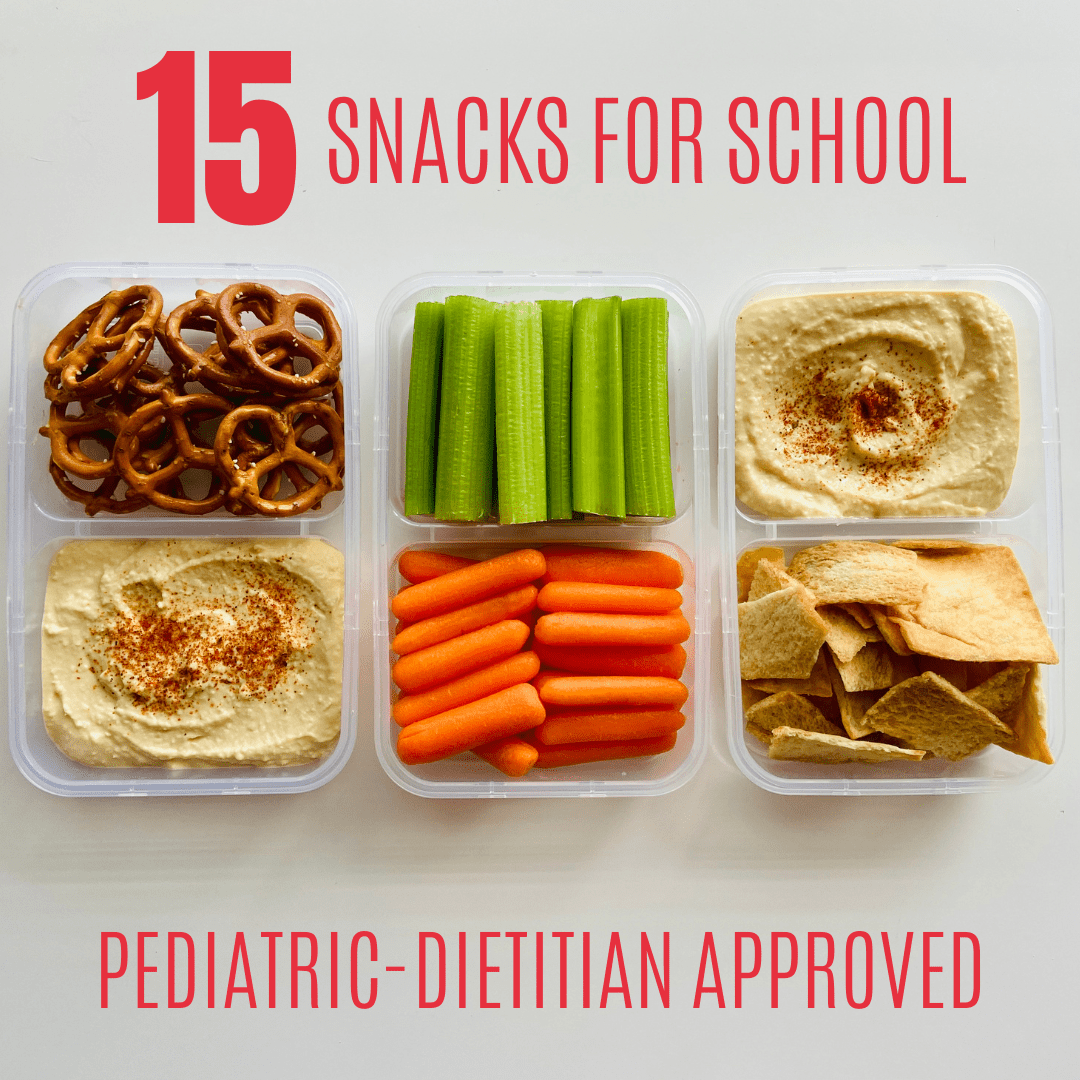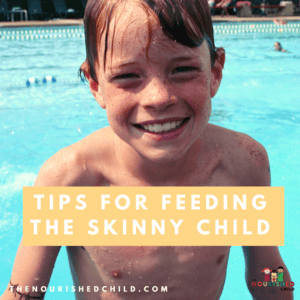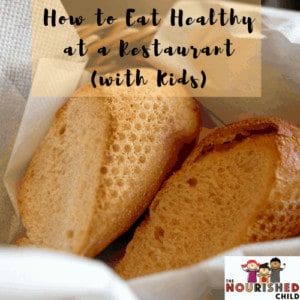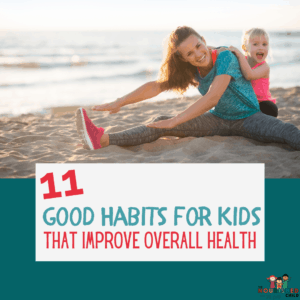Childhood Food Allergies: Review of the Top 9 Allergens
April 26, 2023
The most common food allergies in kids are to the top 9 allergens: Milk, soy, egg, wheat, peanut, tree nut, fish, shellfish and sesame. Learn their prevalence, when and if they’re outgrown, and how to identify foods with these top 9 allergens.
I’ve worked with many families and their children with food allergies over the years. I’ve also written quite a bit about the topic and have raised a child with multiple food allergies.
You could say I’m intimately involved with this subject.
In this article, I will be highlighting childhood food allergies, specifically the top 9 allergens in kids, giving you an overview of each one with attention to their individual prevalence, whether or not the allergy is likely to be outgrown, and what you need to know about identifying allergens in food sources.
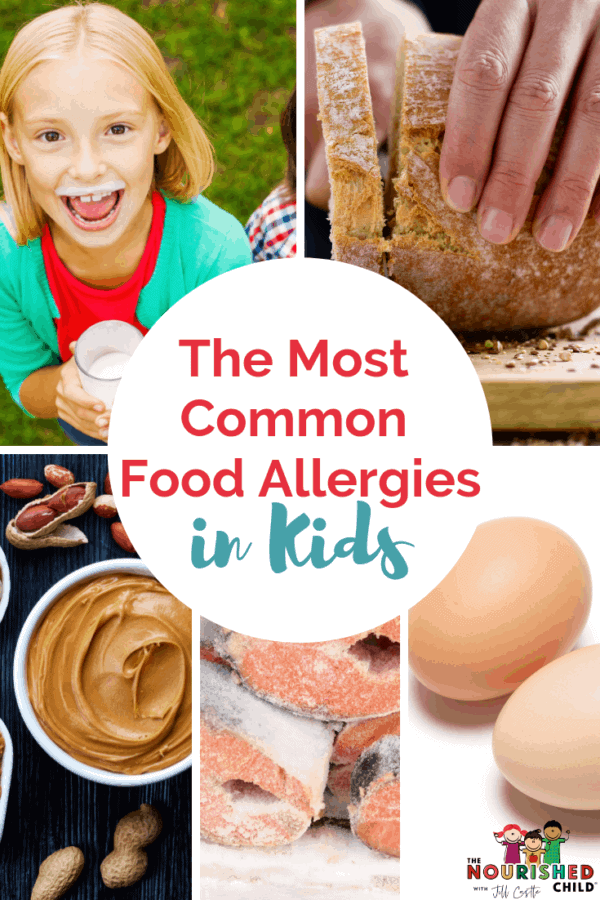
The Top 9 Allergens
About 90% of all food allergies are related to what is called the Big 8, or eight main foods: milk, soy, egg, wheat, peanut, tree nut, fish, and shellfish. An additional allergen was added to the list recently – sesame.
The other 10% are less common and highly varied foods, such as fruit or meat.
Some kids may have an allergy to more than one food allergen, something we call multiple food allergies.
In children, food allergies tend to occur early in life, and kids may outgrow their food allergy over time.
In adults, food allergies may develop at any time, and tend to crop up later in life.
Some kids will have a food allergy that is life long, initiating in childhood and lasting throughout adulthood.
Let’s dive into the most common food allergens and what you need to know.
[Related: 25 Allergy-free Snack Ideas]
Milk Allergy
Milk allergy is the most common food allergy among American children and about 2.5% of children under age three have a milk allergy (or 25 kids out of every 1,000), according to Food Allergy Research & Education (FARE).
Milk allergy is typically diagnosed in the first year of life.
Most children will outgrow milk allergy by the time they are 5 years old, and some kids will outgrow it by 8 years. Others won’t outgrow it until adolescence.
Children with a milk allergy are allergic to the milk proteins called casein and whey. They must avoid all foods made with milk.
Lactose intolerance, or the inability to properly digest the carbohydrate in milk, called lactose, is not a milk allergy. As the name implies, it’s an intolerance or a sensitivity to milk and dairy foods.
What You Need to Know About Dairy Foods
- The presence of milk must be identified on food products in plain language, such as “contains milk” according to the Food Allergy Labeling and Consumer Protection Act (FALCPA) law.
- You need to know the code words for milk, such as casein, whey protein, butter, curds, cream, or ghee, so you can spot them on the ingredients label.
- Be aware of the surprising sources of milk, including non-dairy creamer, deli meats, hotdogs, canned tuna, nougat, and skin and hair care products.
All foods with milk or milk products must be avoided with a milk allergy. Non-dairy milk alternatives are a good solution for milk allergic kids.
Egg Allergy
Egg allergy in children is the second most common food allergy among children in the big eight allergens category. About 1.5% of all children allergic to eggs, or 15 out of every 1,000 kids, according to .
Kids are typically diagnosed with egg allergy before age two.
Up to 80% of children will outgrow their egg allergy by age 5. A small group will take a bit longer to outgrow egg allergy, usually by age 10.
By adolescence, egg allergy is typically outgrown, making adult egg allergy uncommon.
An individual may be allergic to the egg white, the egg yolk, or both. Avoid the whole egg if an egg allergy is present as it is nearly impossible to separate the two.
What You Need to Know About Egg in Foods
- Egg must be labeled on food in plain language, such as “contains egg,” according to FALCPA.
- Read the ingredients label for evidence of egg in a food product. Words like albumin, ovalbumin, eggnog, mayonnaise and meringue indicate the presence of egg.
- Be aware of hidden egg ingredients such as in liquid egg substitutes, pretzels, coffee drinks and pasta.
- Egg may also be present in immunizations such as the flu vaccine and the measles, mumps and rubella (MMR) vaccine. Certain medications, like anesthesia medications, may contain egg.
Soy Allergy
About 0.4% of children are allergic to soy (4 out of every 1,000 kids). Many children with a soy allergy will outgrow it by age 3, and most will outgrow it by age 10.
Reactions to soy tend to be mild. However, although rare, severe reactions can occur.
Children who are allergic to soy may also be allergic to milk.
If your child has a soy allergy, he must avoid all foods and non-food products containing and/or made with soy.
What You Need to Know About Soy Foods
- Soy must be labeled on food packages in plain language, for example, “contains soy,” according to FALCPA.
- Soy is very prevalent in processed foods. Many foods contain soy so be sure to read the ingredients label.
- Code words for soy include: miso, natto, soya, tempeh, and soy protein.
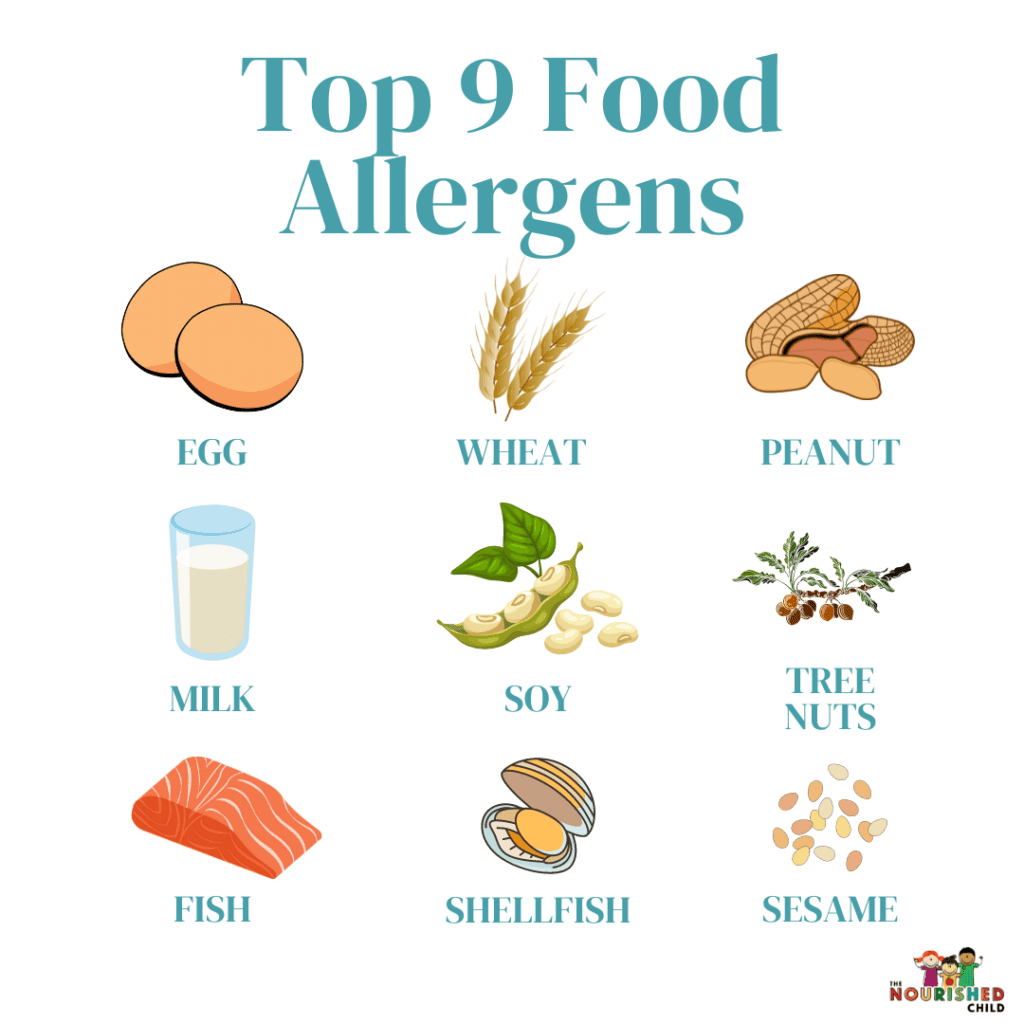
Wheat Allergy
About 0.4% of children in the U.S. are allergic to wheat, or 4 out of 1,000 children.
Approximately 20% of children who are allergic to wheat will be allergic to other grains, so check with your allergist if foods containing barley, rye or oats are okay to eat.
Many kids will outgrow a wheat allergy by the age of 3 years. Studies show about 65% of kids will outgrow wheat allergy by age 12.
What You Need to Know about Foods with Wheat
- As one of the top 9 allergens, wheat is the predominant grain in the American diet so it can be tricky to avoid.
- Wheat is found in a variety of foods including breads, cereals and crackers, as well as in unlikely foods like beer, soy sauce, deli meats, ice cream and imitation crabmeat.
- Look for ingredients such as bulgur, couscous, emmer, farina, farro, flour, matzoh, semolina, and wheat protein isolate as indicators of wheat in a product.
- Wheat can also be found in non-food items such as Play-Doh, glue and ice cream.
Why Celiacs Follow a Wheat-Free Diet
If your child has celiac disease, you probably know he must avoid gluten. Gluten is found in wheat, rye, barley and contaminated oat products.
Hence, many kids with celiac disease follow a wheat-free diet and avoid other sources of gluten.
Peanut Allergy
Approximately 1.6% of children are allergic to peanuts (16 out of 1,000 children).
Peanut allergy is considered a life-threatening allergy because rates of anaphylaxis are higher than that of milk, egg or wheat allergy.
Only about 20% of children will outgrow their peanut allergy.
Peanuts grow underground (not in trees like tree nuts) and are part of the legume family, which also is home to soybeans, peas, lentils and beans.
Having a peanut allergy does not mean you have a greater risk for allergy to beans and other legumes, however.
It’s estimated that 25-40% of people with a peanut allergy also have a tree nut allergy, according to a 2003 Journal of Allergy and Clinical Immunology.
If your child is allergic to peanut, strict avoidance is necessary.
Preventing Peanut Allergy
Recommendations for prevention of peanut allergy have changed in recent years.
- Experts advocate age-appropriate introduction of peanut (and the other top food allergens) within the first year of life. Knowing how to introduce peanuts to your baby can help.
This is based on the ground-breaking LEAP study, showing peanut allergy was reduced when it was incorporated into the diet between 6 month and a year of age.
[Read: When Can I Start Giving Peanut Butter to My Baby?]
What You Need to Know about Foods with Peanut
- Peanuts in food products must be labeled according to FALCPA in plain language on the package.
- Watch for ingredients including arachis oil (aka peanut oil), nut meat, peanut flour, and mandelonas (peanuts soaked in almond flavoring).
- Beware that peanut butter is used as a thickener in products like chili, and in pet food.
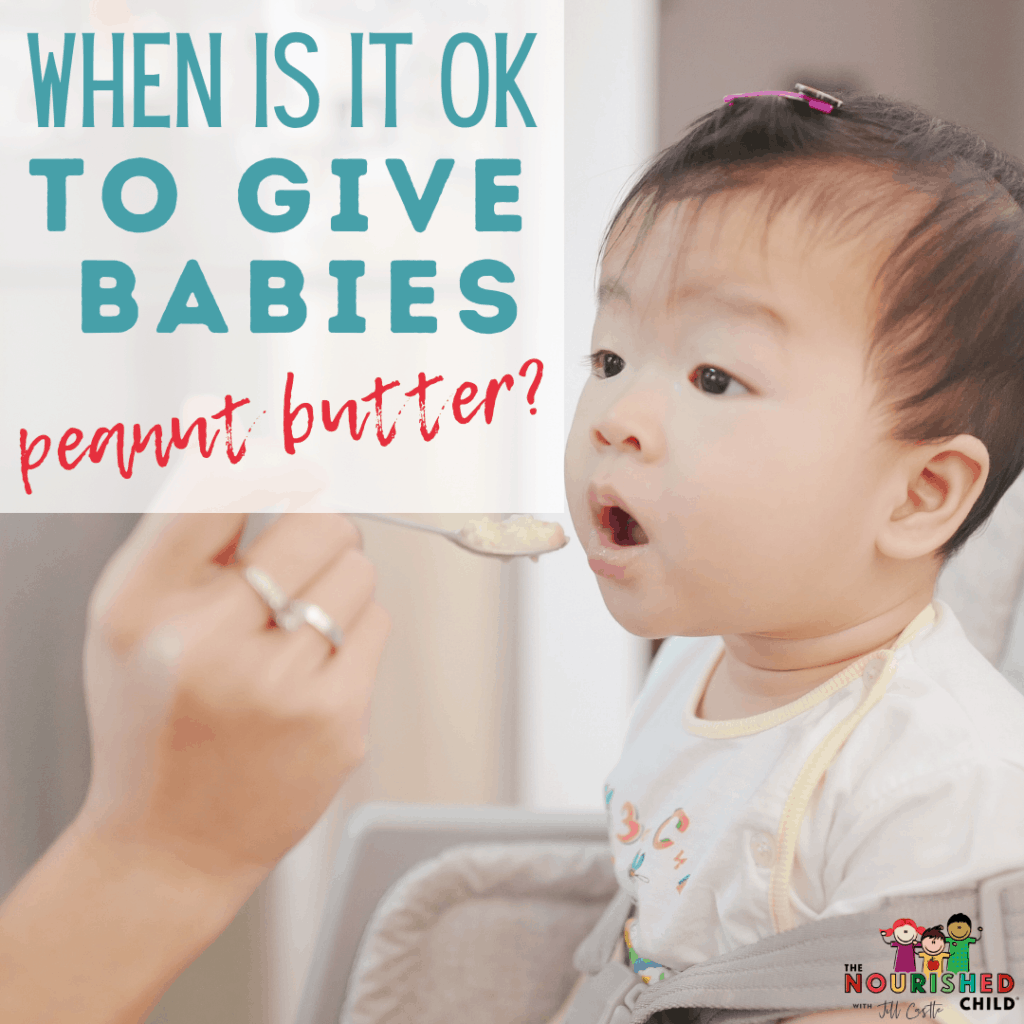
Tree Nut Allergy
Approximately 1.1% of children have a tree nut allergy, or 11 out of 1,000 kids . It’s estimated that about 9% of kids with a tree nut allergy will outgrow it.
My son falls into this statistic. We re-tested him at age 17 with an oral food challenge and much to his delight, he had outgrown his cashew and almond allergy.
Tree nuts include a broad range of nuts, such as walnuts, pecans, pistachios, hazelnuts, almonds, cashews and more.
Tree nuts are essentially every nut that isn’t a peanut.
Due to the risk of cross-contact during food manufacturing and production, individuals with tree nut allergy may also avoid peanuts.
The risk of anaphylactic reaction to tree nuts is higher than that of milk, egg or wheat.
It is possible to be allergic to one nut and not to others, or to be allergic to two types of tree nuts and not others.
It’s recommended to avoid all tree nuts if you are allergic to one or any tree nuts.
What is Cross-Contact?
Cross-contact is a term that describes the mixing of allergenic proteins through the direct contact with one another. As a result, each food contains a small amount of the other food.
This can happen with the Big 8. For example, in food production where products with peanuts are made on the same machinery as foods without peanut.
The peanut-free food may come into contact with peanut proteins, especially if the machinery isn’t thoroughly cleaned.
What You Need to Know about Tree Nuts in Food
- Tree nuts must be labeled on the ingredients label or food package in plain language, according to FALCPA.
- There are many names for tree nuts, from the specific nut like ‘cashew,’ to the Latin name in cosmetic products.
- Tree nuts can be found in cereals, crackers, cookies, candy, chocolates and some cold cuts.
Fish Allergy
About 0.1% of children have a fish allergy, or 1 out of every 1,000 kids.
Fish allergy tends to develop in adulthood and can be a severe, life-long allergy.
Salmon, tuna and halibut are the most common fish allergies, but there are many types of fish and sensitivities have been reported to other types.
It is possible to be allergic to one type of fish species and not others, however many individuals with a fish allergy will be advised to avoid all fish.
What is Scromboid Poisoning?
Aged fish (or fish that isn’t fresh) can produce a natural histamine which may trigger a reaction similar to a food allergic reaction.
This is called scromboid poisoning and includes swelling of the mouth or throat, difficulty breathing, and/or nausea or vomiting after eating fish.
What You Need to Know about Fish in Food
- According to FALCPA, the specific type of fish included in a food product must be disclosed in plain language on the package.
- Fish has been found in surprising foods like Caesar salad dressing, artificial seafood, Worcestershire sauce and barbeque sauce, so make sure to read the food and ingredients label.
- Restaurants may fry fish and other foods like French fries in the same vat of oil, which contaminates the oil with fish and makes it unsafe to eat for those with a fish allergy.
- Be aware of certain products like kosher gelatin, which is made from fish bones.
Shellfish Allergy
Shellfish allergy occurs in adults more often than children, with about 60% of individuals experiencing their first reaction as an adult.
Fish and shellfish come from two different fish families, so an allergy to one type doesn’t necessarily mean you will be allergic to both.
There are two types of shellfish: crustacea (shrimp, crab and lobster) and mollusks (clams, oysters, mussels and scallops).
Allergic reactions to crustacean shellfish are more common and tend to be severe.
Most individuals who are allergic to shellfish are advised to avoid both kinds of shellfish.
What You Need to Know about Shellfish in Food
- The specific shellfish must be labeled as an ingredient on packaged food when it is included, according to FALCPA.
- Mollusks are not considered a major allergen and may not be fully disclosed on a product label.
- Avoid seafood restaurants as there is a high risk for cross-contamination, even if you don’t order a shellfish option.
- Fish sauce is often used in Asian restaurants as a flavoring; avoid eating in such restaurants or at a minimum, use extreme caution.
- Shellfish proteins may become airborne during steaming so use prudence around kitchens where shellfish is being cooked.
Sesame Allergy
Sesame is a common ingredient in cuisines around the world. Sesame is a tiny seed from the sesame plant.
Allergies to sesame have been on the rise over the past two decades, which is why sesame allergy is considered the ninth most common food allergy. About 0.23% of adults and children are allergic to sesame.
Symptoms of an allergic reaction can be mild or very severe, from hives to anaphylaxis.
What You Need to Know about Sesame in Food
- Sesame allergy is a new food allergen as of January 1, 2023.
- All products must list sesame as an ingredient in plain language.
- Because it’s a new allergen, some manufacturers may not have listed sesame as an allergen on their packaging yet. Be sure to read the ingredient list!
This article was updated in April 2023 to reflect sesame as a top 9 allergen.
References:
Sicherer SH, Munoz-Furlong A, Sampson HA. Prevalence of peanut and tree nut allergy in the United States determined by means of a random digit dial telephone survey: a 5-year follow-up study. J Allergy Clin Immunol 2003; 112(6):1203-7.

